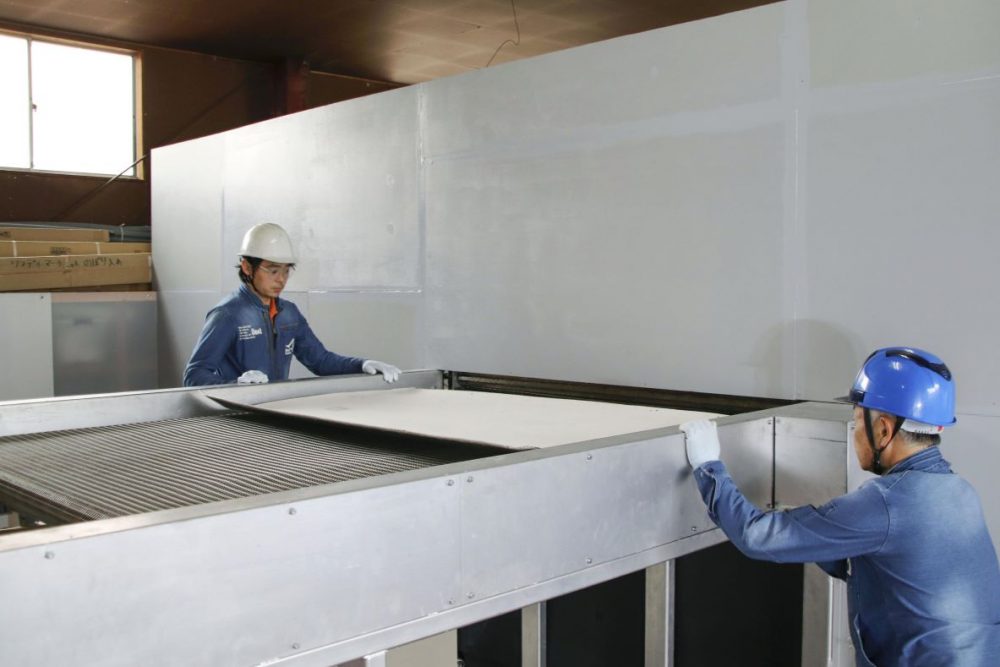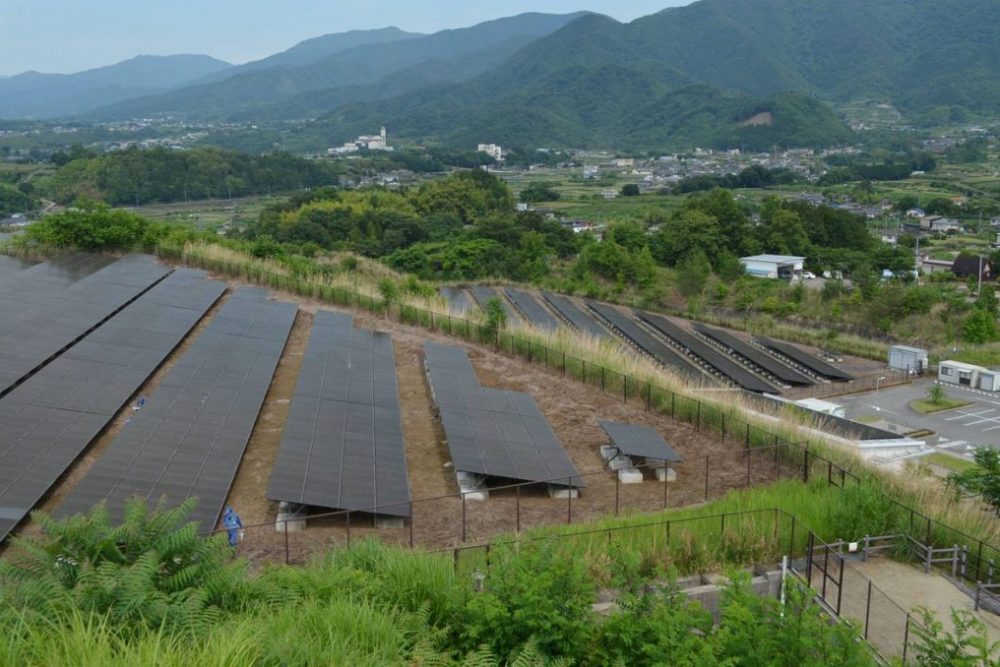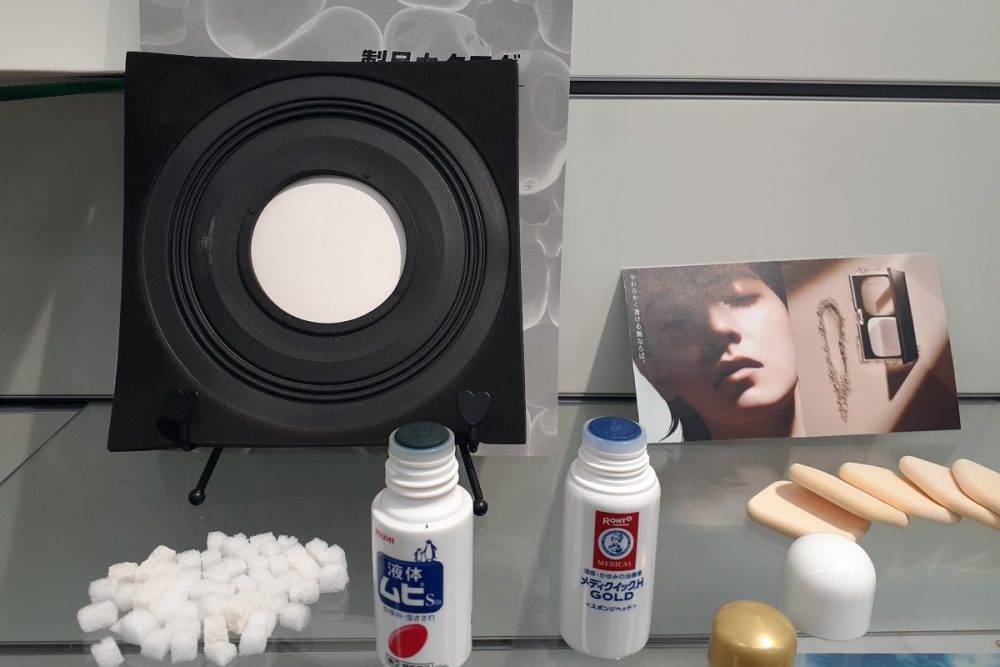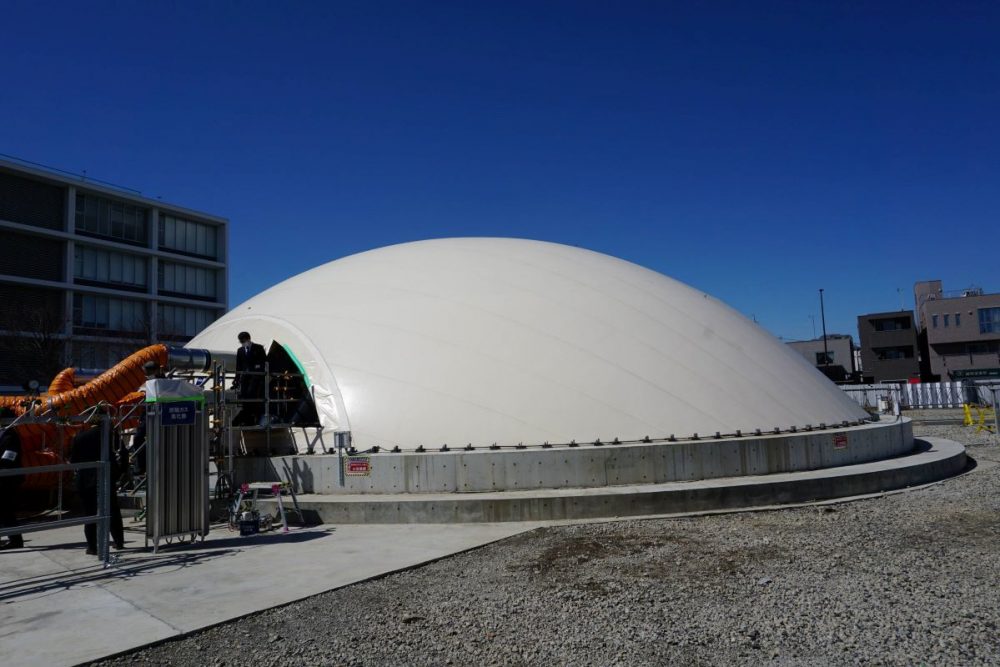New and Inventive Squid Farming Method Could Save Declining Population
A research team in Okinawa developed a squid farming system based on a hot springs water-flow method and aimed at remedying over-exploitation of the resource.
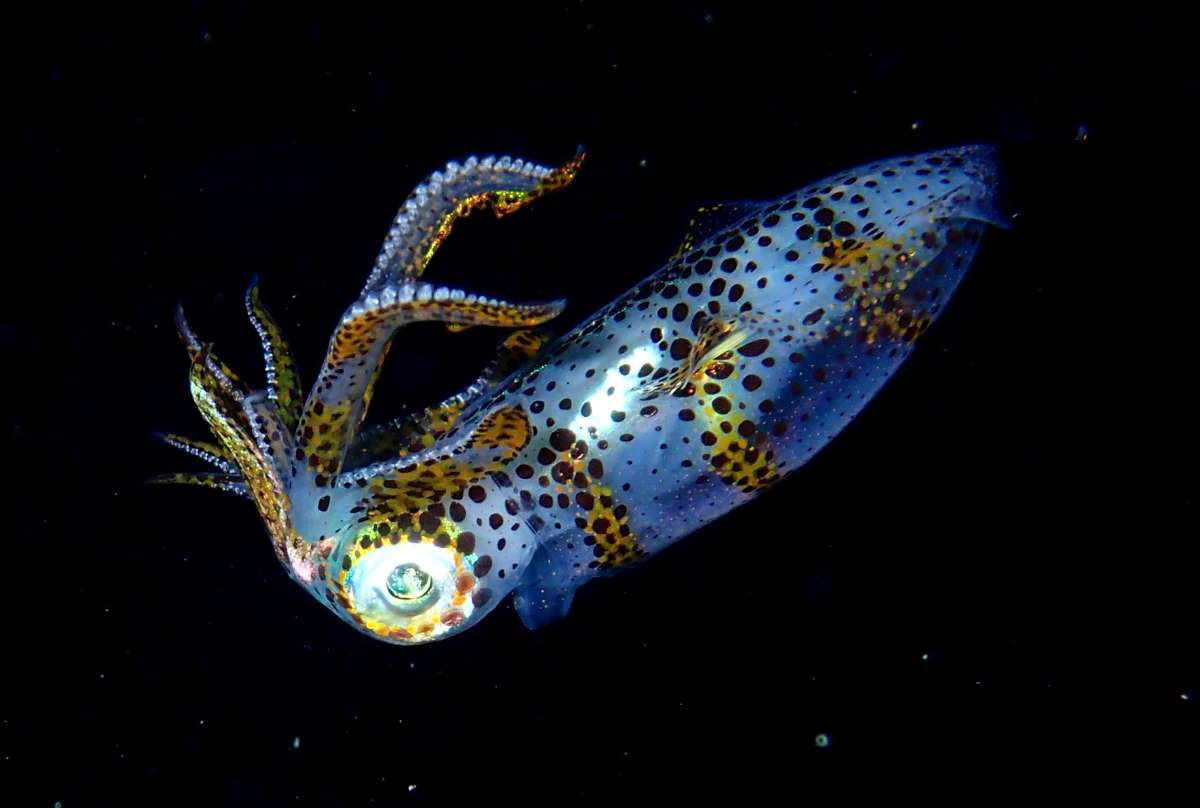
このページを 日本語 で読む
Squid is an indispensable part of the Japanese diet, but squid catch is undergoing a rapid decline.
Research into squid farming has been conducted worldwide for roughly the last 60 years, but with little success. As a result, some have concluded that squid aquaculture is impossible.
A research team at the Okinawa Institute of Science and Technology Graduate University (OIST) has finally succeeded in developing a sustainable system of farming. The team has set out to commercialize within five years.
Behind this world-first remarkable accomplishment was an ingenuous idea based on the workings of Japanese hot springs.
Squid Catch Falls to 10% of Peak
Squid is a favorite food in many parts of the world, especially Asia, Europe and North America. In Japan, it held the top ranking for annual fresh seafood purchased per capita until the early 2000s.
Since then, its rank has continued to decline. In 2021, it fell to 5th place behind salmon, tuna, yellowtail, and shrimp.
The apparent reason was a sharp drop in squid catch and resulting higher prices. In 1968, squid catch was at its highest since the Meiji Era, peaking at 773,777 tons. Catch has continued to decline since, falling to 82,180 tons, about one-tenth of peak times, in 2020.
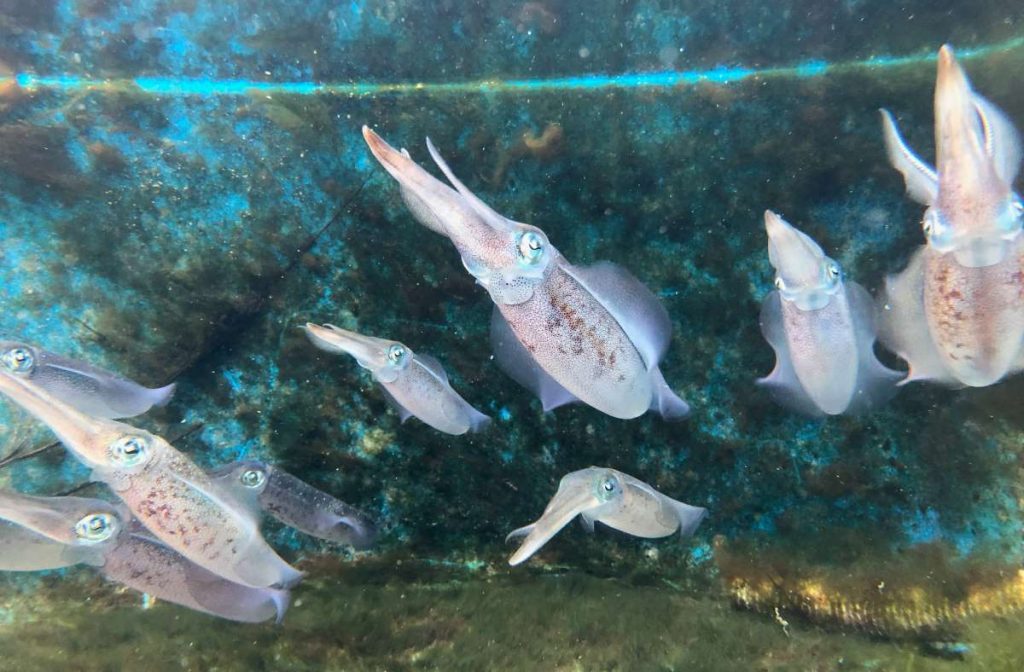
While detailed factors are unknown, causes of the decline are thought to be overfishing and climate change. As a result, Japan has been forced to rely on imports for a large portion of squid consumed, particularly frozen products.
Research on squid farming aimed at securing a supply of squid has been conducted around the world for roughly the last 60 years. But making squid farming a reality has proven difficult.
A squids swims by pointing the tip of its long body (which looks like a head) and releasing powerful jets from its leg side.
In humans, this is the equivalent of running backwards. This form of swimming works in the open sea, but in tanks made for farming, squid bump into the walls, injure themselves, and eventually die.
Raising the paralarvae immediately after hatching was also not possible as not a lot was known about their feed. Even if feed could be determined, it was difficult to provide it at a stable rate.
Squid are sensitive to water temperature and quality. Thus, another reason squid farming was considered impossible was due to slight changes in environment leading to complete wipe out.
The Target: Bigfin Reef Squid
Based on prior research, the team at OIST chose the bigfin reef squid, known as a delicacy, from among various types of squid to target for farming.
Although related to the Japanese common squid and the spear squid, the bigfin reef squid has a long fin that connects all the way down to its legs, unlike the Japanese common squid, which has a triangular fin.
The Japanese common squid uses its fin to steer, but the bigfin reef squid can ripple its fins to swim slowly or even stay still in the water. For this reason, prior research has found that it is less likely to bump into the walls of a tank.
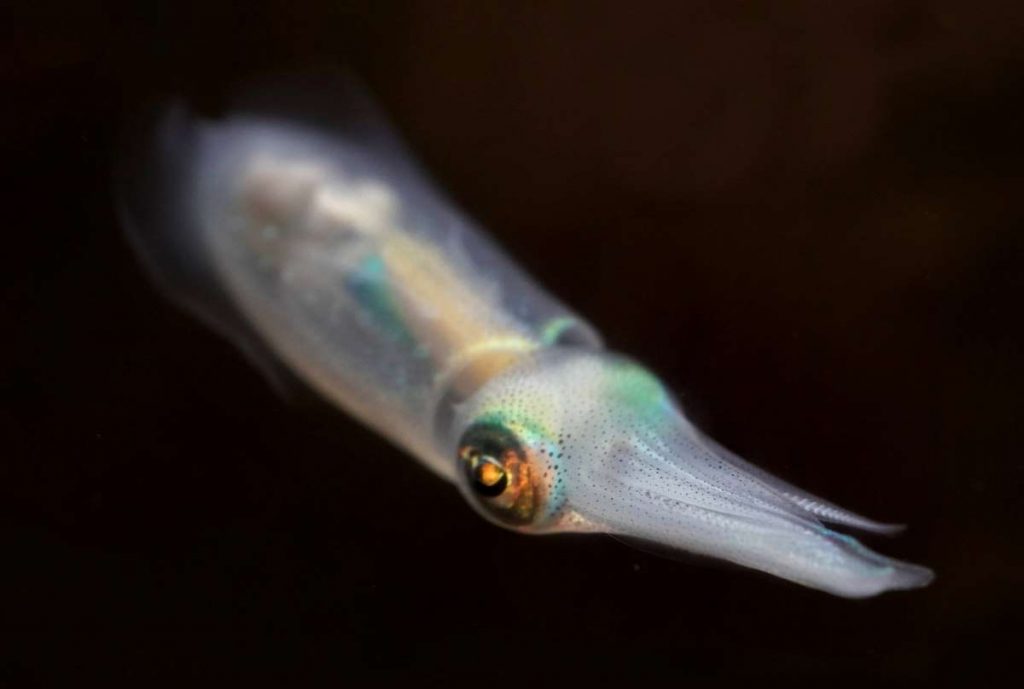
It has also been found that a type of opossum shrimp, a 4-5 cm long crustacean, can be used as feed for the paralarvae.
Using this feed, paralarvae have successfully been raised into adults, then laid eggs that hatched. However, this cycle has proven difficult to maintain for multiple generations.
Even the most successful team, located at the University of Texas, reported in the 1990s that it could not maintain the cycle, experiencing a drop in hatching and survival rates of a few percent after seven generations.
Since then, no one has cracked the mystery of how to continue the cycle and make squid farming a reality.
Hot Spring-Style Seawater Flow
Based on these results, the OIST team tested past studies that had some measure of success. They noted that closed recirculating systems were used when bigfin reef squid were raised in tanks.
The seawater or artificial seawater inside tanks was sucked up by a pump, passed through a filter to remove impurities, and then returned to the tank. Accordingly, no matter how clean the seawater was, in experiments to date, it was quite different from seawater in the natural environment.
Keeping the seawater in its more natural state was the next step. After consideration, the OIST team decided to employ a constant flow of fresh seawater.
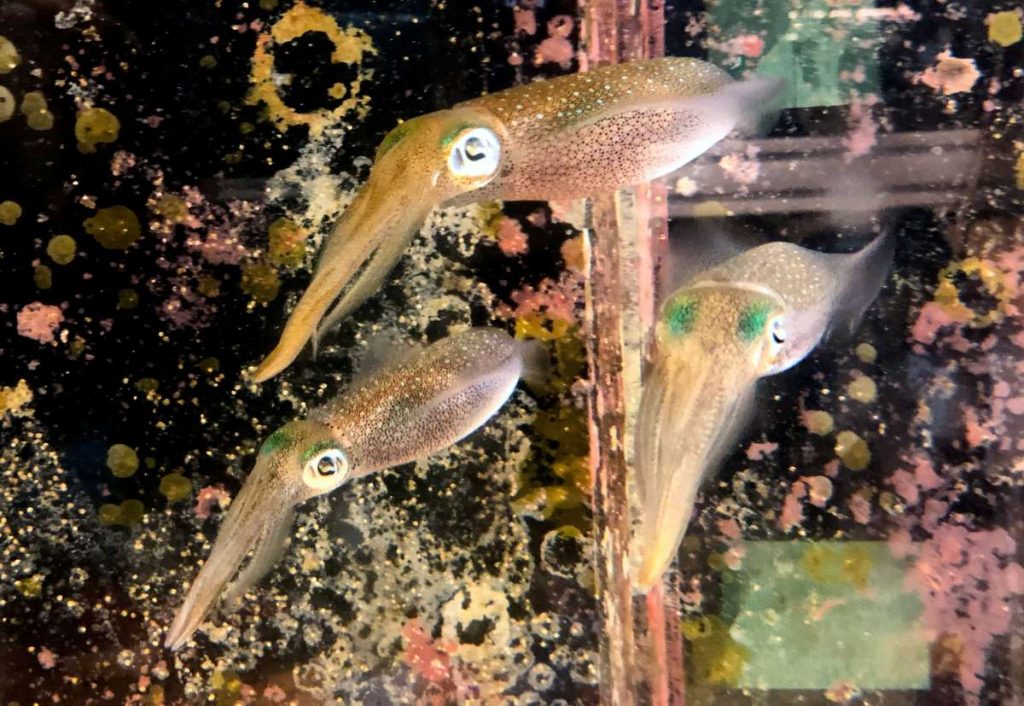
The method is similar to the method used to maintain the comfortable temperature in Japanese hot spring baths based on a continuous influx of hot spring water and draining of overflow directly into sewage pipes.
Here, fresh seawater is continually pumped into the tank, and the overflow is drained back into the ocean rather than returned to the tank.
By using this method, the team believed it could create a suitable environment for farming squid.
Testing the Method
A constant-flow seawater tank was set up at a research facility near the sea. Fertilized eggs raised in it showed a survival rate exceeding 90% at 90 days after hatching.
Video footage of the bigfin reef squid was also taken to analyze the squids' feeding and growth.
An efficient aquaculture system was developed by determining the optimal amount of feed and frequency of feeding to provide, as well as the density of squid in the tank and the state of water flow and quality.
As a result, in the five years since 2017, this system has succeeded in producing more than 50,000 bigfin reef squid by repeating the process from hatching to breeding over 10 generations.
Even for the 10th generation, hatching and survival rates remained above 90%.
The team announced in August 2022 that they had successfully developed the world's first sustainable system for squid farming.
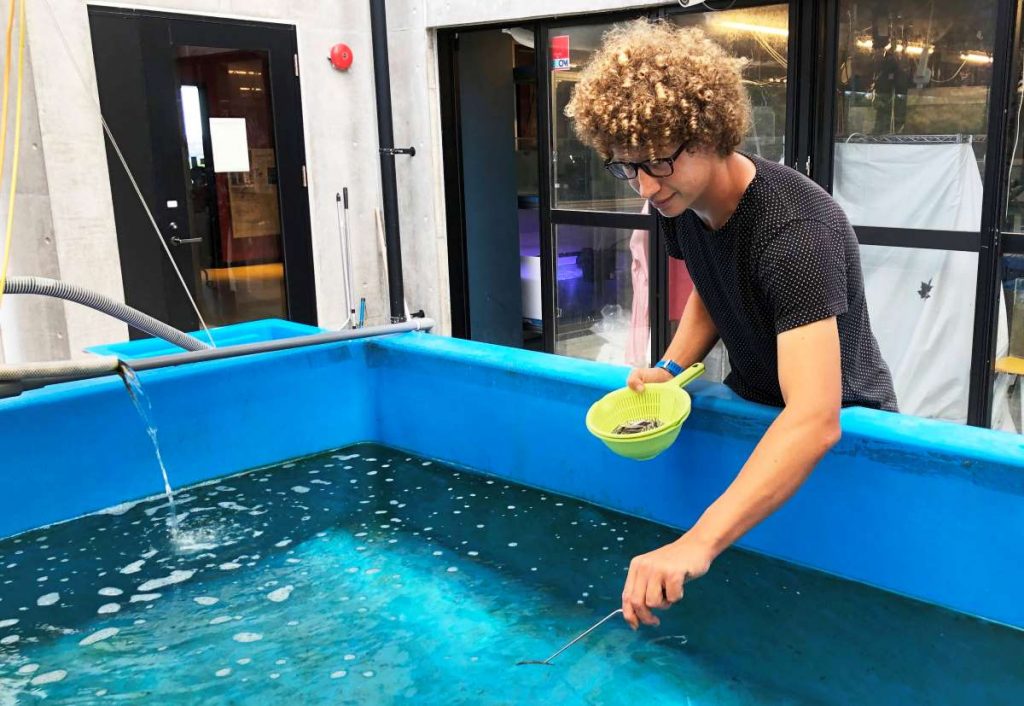
Dr Ryuta Nakajima, a professor at the University of Minnesota Duluth and a visiting researcher at OIST explained, "This method is able to create an optimal environment because it allows for the constant flow of natural seawater. It is also possible that microorganisms in the seawater are necessary for the growing squids to digest food."
Commercialization in Five Years
The research team is currently collaborating with representatives of the fishing industry, companies, and the government to commercialize the aquaculture system. It also applied for a patent.
The biggest issue is the cost. Compared to closed aquaculture methods, electricity costs for temperature control are reduced, making the operational costs of the constant-flow seawater method inexpensive. But compared to the cost of wild-caught squid, the cost of raising squid is still expensive.
Another big problem is what to do about feed. Juvenile squid feed on shrimp-like crustaceans, but they typically only eat them if they are alive. Maintaining a stable supply of live shrimp is difficult and comes with extremely high costs. At present, the team is working on ways to feed the squid dead shrimp.
Researchers are mixing a small amount of non-living material in with the live opossum shrimp given to juvenile big fin reef squid, and increasing the ratio as they grow.

In this way, if they learn from an early stage that they can eat the non-living feed, the entire amount of live feed can eventually be replaced. This would lead to significant cost reduction.
Dr Nakajima remarked, "By working together with people in the fishing industry and companies with differing perspectives, we hope to increase the pace of technological improvements and commercialize in five years."
If this becomes reality, we can not only secure rapidly-declining squid populations, but it could also lead to controlling the over-exploitation of natural resources and environmental deterioration of fishing grounds."
このページを 日本語 で読む






